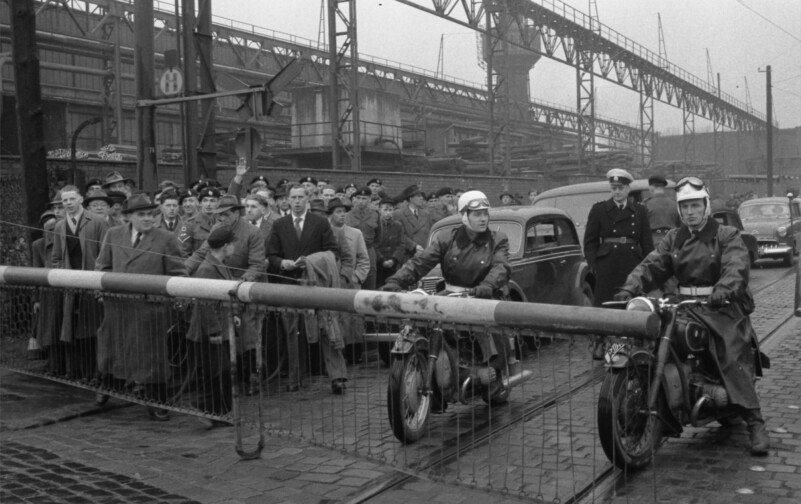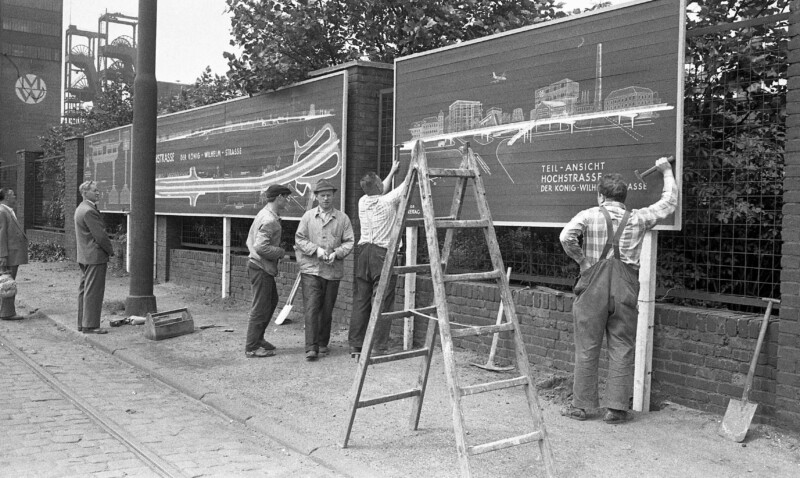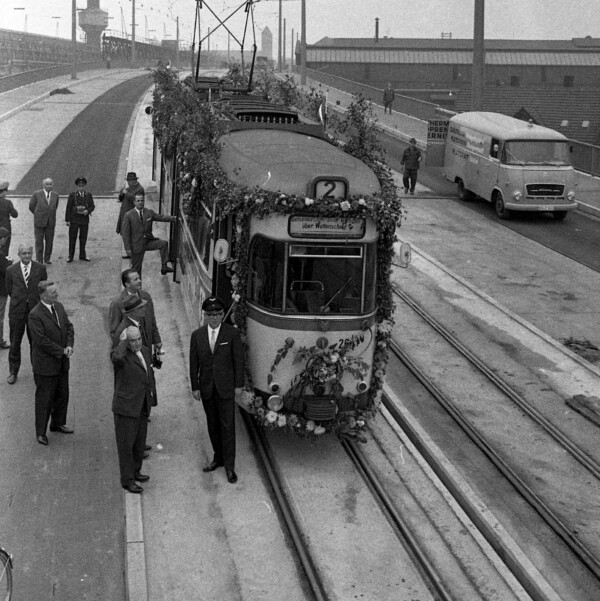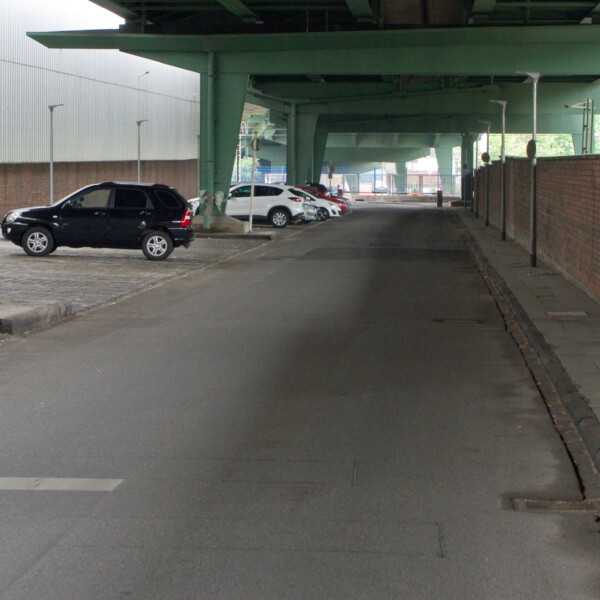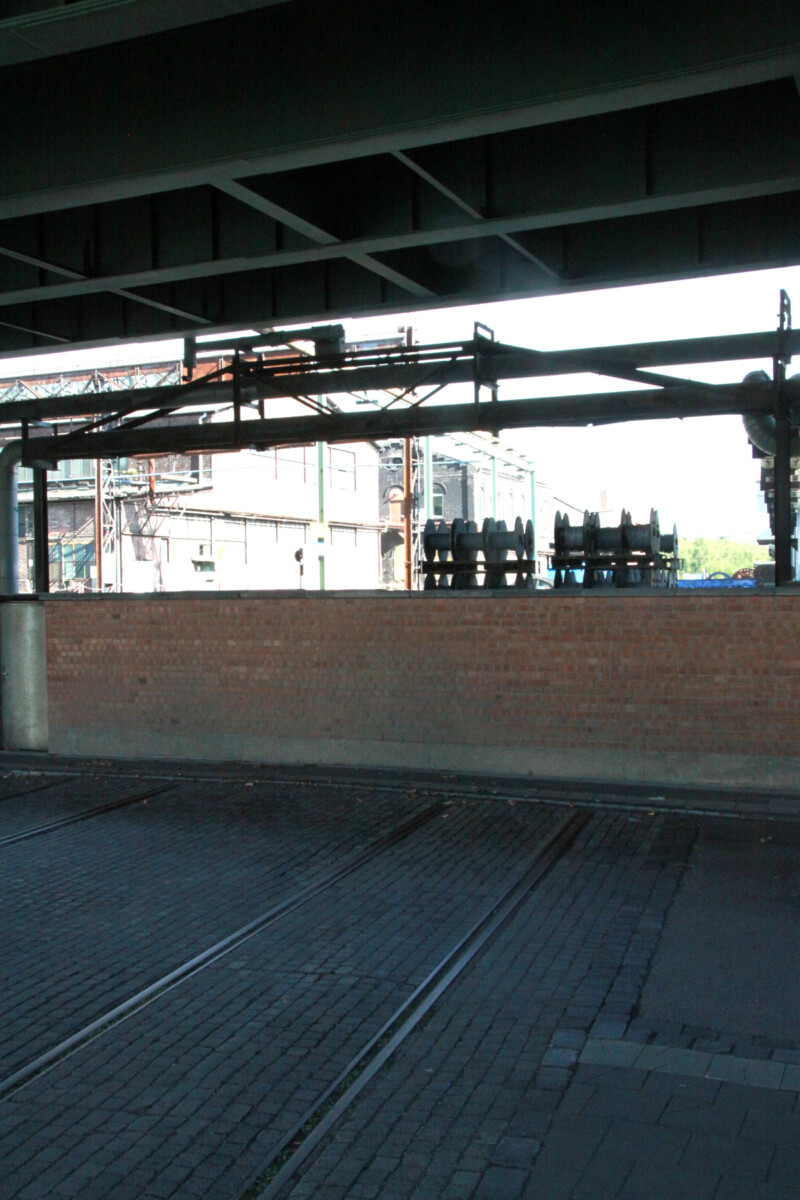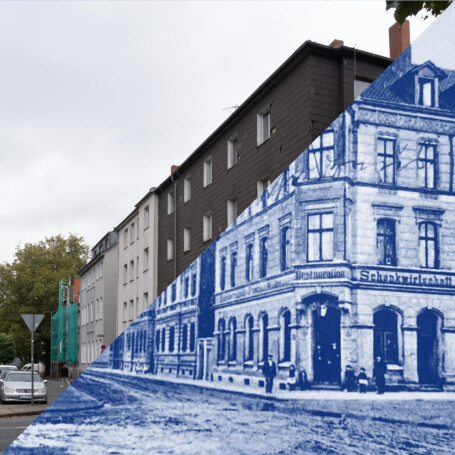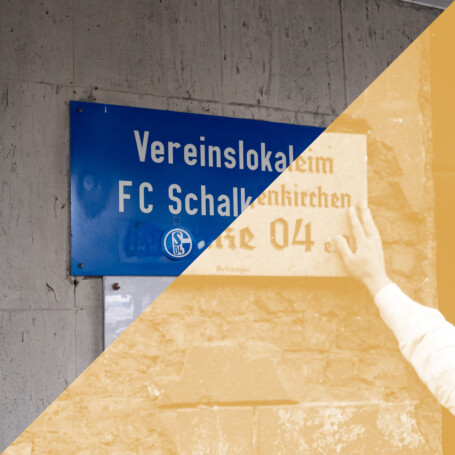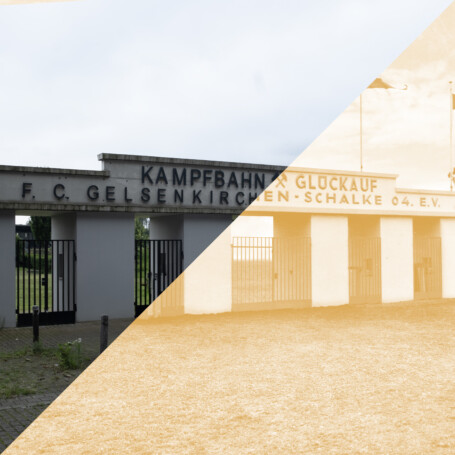Berlin Bridge


A Schalke without barriers
The Berlin Bridge was intended to lead Gelsenkirchen and the Schalke district into a "car-friendly" future. The car was becoming more widespread, and the economic miracle meant that more people could afford a vehicle. Between 1950 and 1959, the number of registered cars in the Federal Republic rose from 518,000 to 3.5 million. A piece of the old Schalkes had to make way for this step into the future: The last magnificent buildings on Kaiserstraße that had survived the Second World War also had to make way for the new four-lane road. And Schalke Market disappeared completely in the shadow of the new steel colossus. Today, the volume of traffic on the four-lane Kurt-Schumacher-Strasse between St Joseph's Church and the Schalke Meile is a major burden for local residents and the environment. Trains hardly ever run on the tracks any more. The purpose of the bridge has therefore disappeared. Perhaps there will no longer be a Berlin Bridge in the Schalke of the future. Along the Schalke Mile behind the northern end of the Berlin Bridge, people are already thinking about what Schalke could look like without the Berlin Bridge and with a two-lane Kurt-Schumacher-Straße.



